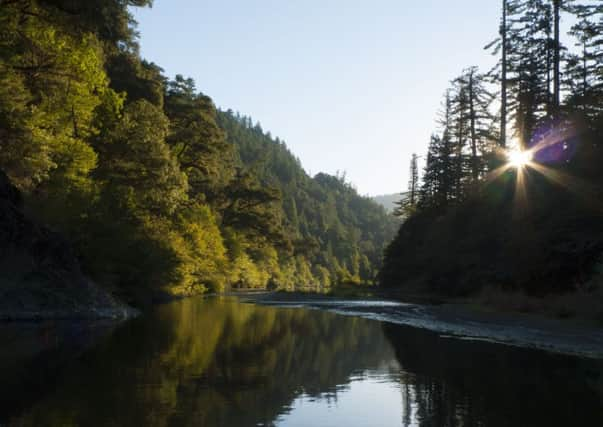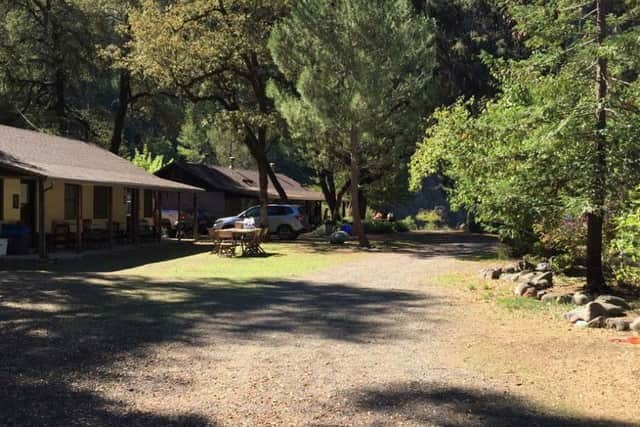Travel: Going around California’s Big Bend


I don’t generally feel very attached to places. I suppose I moved too often as a child. When people ask me where I’m from, I don’t know what to say. I can say where I live now, but even after 13 years, I don’t feel like I’m from here, and I don’t particularly like my current house. I openly fantasise about where I might want to live next, after my youngest child leaves for college in two years.
This “place-less” feeling may explain why my first novel ended up set in a whole bunch of places, imagining the explorers who wandered through them. It may also explain why the longest sustained connection I’ve had with any single place turns out to be with a holiday spot. You see, every summer for 20 years my family and I have joined a group of friends for a long weekend at a riverside resort in Northern California called Big Bend Lodge.
Advertisement
Hide AdCalifornia is justly renowned for its natural grandeur – the majesty of Yosemite, the heart-stopping loveliness of the Big Sur coast, the austere beauty of our deserts. It’s also known for high-class destinations – swanky hotels in Beverly Hills, wine country villas with gracious views, Lake Tahoe houses for snow-loving one-per centers. Big Bend is none of these things.


Nestled at the bottom of a steep, wooded canyon carved by the South Fork of the Eel River, the setting is pretty without inspiring wonder. The lodge itself has a somewhat down-at-heel quality. The cabins are clean, mostly, and well-kept, mostly. The plumbing is easily over-taxed. The beds are comfortable enough, but the furniture is old and worn. Dresser drawers stick. Hinges squeak. Screens don’t quite fit the window frames. The appliances have improved in recent years, but the fridges have been known to freeze our greens, while the ovens burned our pies. Dishes are mismatched; the knives are dull. Outside, the dusty courtyard features splintery picnic tables covered with peeling contact paper and a sun-warped ping-pong table. The managers’ gentle, smelly dog ambles by with a limp.
We love it. We can also afford it.
Our group of 25 to 30 people rents out the entire place – nine cabins. Every adult is assigned to help with one group lunch or dinner – our friends include serious foodies, so meals are often sensational. Aside from that task, there are no obligations and no need to leave the property. Mostly we hang out at the river, reading or chatting in beach chairs or floating in giant inner tubes while the more intrepid among us (which never includes me) climb up the crumbly cliff-face opposite to dive off or wander downstream in search of wildlife or rapids.
I always cart along a big novel – this summer it was Anthony Doerr’s enthralling All the Light We Cannot See – but I never make much progress. Some of the folks who come to Big Bend are among our closest friends. Others I see only once a year. Either way, it’s a treasured chance to catch up with one another in an unhurried way. We’ve seen each other through the whole array of life’s gains and losses – children, parents, health, love, jobs, weight.
The beach also changes every year. The South Fork of the Eel River meanders just over 100 miles, tracing a northwesterly route from mountains in Mendocino County before joining the main stem on its way to the Pacific. Water flow varies dramatically with the seasons. In summer the river is so gentle it can be hard to tell the direction of the current, and at its widest point in the “bend” that gives Big Bend its name it might be 15 metres across. But winter rains can remake the canyon – sometimes violently. The rocky path we take from the cabins to the water could, in six months’ time, be swept away by debris-laden torrents. We’ve often found the beach narrower or wider, steeper or more level, sandier or rockier, than the year before.
This summer, the water level was noticeably lower. The beach extended further out than it used to. The river was shallower. And the tiny boulder-cum-island upstream, atop which a small tree had somehow managed to gain purchase, looked taller – not just the tree, which had grown, but the boulder, more of which was visible because the river had dropped.
Advertisement
Hide AdIt’s impossible to write about California these days without acknowledging the devastating drought that has spanned four years. One of the worst effects of having no rain, of course, besides the obvious one of not having enough water for people and agriculture, is the increased risk of fire. Over the years, more and more of the talk at the river has concerned the state’s water and fire woes (too little of one, too much of the other). My husband Dan, a lawyer for the State of California, had actually missed the 2013 Big Bend trip, tied up with a protracted, awful lawsuit over firefighting cost reclamation for a huge wildfire in Northern California. The next year he rejoined us, which was good, as it was our last time there with both of our children before our eldest left for college. The first time we’d come to Big Bend, that college-bound kid had been five months old.
We drove home from that poignant weekend on Sunday, 27 July, 2014. Three days later, a lightning strike started a fire nearby. By the following Sunday, Lodge guests had been evacuated and the property turned into a staging area for firefighting operations. For the next three weeks, Big Bend’s many loyal regulars followed anxiously on Facebook as Lodge staff posted updates. By the time it was declared officially over, the fire had burned more than 50 square kilometres, injured 15 firefighters, and cost over $40 million to combat. It had burned right up to the ridge opposite the Big Bend beach but, thanks to skilled firefighting and some luck, hadn’t crossed the river.
Advertisement
Hide AdWatching this unfold from a safe distance, I realised, not only how much the place meant to me, but that it was the only single-address location for which I felt that kind of attachment. Losing my own house would be awful, of course, entailing tremendous inconvenience, financial damage, the sorrow of losing some much-loved things. The house itself, designed and built in the 1960s by someone with no sense at all, I would not mourn long.
Big Bend had nothing of mine except memories and the promise of returning year after year. Yet I found myself hoping very hard that I would not have to lose the place that had created those memories and held out that promise. My husband and younger son and I returned to Big Bend this year, our older son having a summer internship back East. The place looked exactly the same, no visible evidence of the fire anywhere. We unpacked our car, then loaded our arms with our beach chairs and umbrella and headed downhill.
“I wonder what the beach will be like this year,” we said as we made our way toward the water.
• Landfalls, Naomi J Williams’ first novel, is published by Little Brown at £14.99, out now.